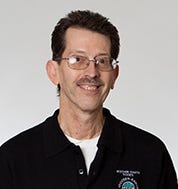
Between our multitasking culture and the prevalence of smartphones, more and more of us are reaching for our earbuds when we want information. According to the Pew Research Center, about one-third of adults get their news from radio and nearly 20 percent listen to podcasts. In fact, Apple has more than 1 billion podcast subscribers to date. Now that’s a lot of listening.
For natural products retailers who pride themselves on being a resource for information, a broadcasting strategy can be a worthwhile extension of their in-store education efforts.
Dave Hawkins, master herbalist and certified nutritional consultant, has found great success with his radio show, Highway to Health. His goal? To reach beyond the doors of his Parkersburg, West Virginia-based natural foods store, Mother Earth Foods, to 
The sound of promotion
“That’s how you beat the competition,” he said. “By branding ourselves around education, we are recognizable in our community.”
To get the most bang for his buck, Hawkins works his radio show into Mother Earth Foods’ marketing plan. “I endorse a product, educate on my radio show and give a money-back guarantee in the store,” he said. “When new customers come in and mention the radio show, that’s effective. We broke the ice. Next time, they might come back.”
Shannon Hoffmann, president and co-owner of Green Acres Market, takes a different audio approach in translating her radio show into a podcast called HealthTalk. She and her partners found that getting listeners to tune in at a certain time was difficult in a large radio market like Kansas City and liked the appeal of on-demand, niche coverage that comes with a podcast download.
3, 2, 1 … fun
The important thing to remember is that, though different in many ways, podcasts and radio share the same formula for success: a quick and fun format.
“We learned early on that you can’t talk for a solid hour,” said Hawkins, adding that creating smaller segments keeps it interesting for listeners, and also prepares the show for any syndication opportunities that might come down the road.
Hoffmann agreed, “Dr. Oz really sparked a sound-bite environment, so we started moving away from long interviews. Over time, we learned it was about entertainment first and education second.”
Shorter radio segments can also work double duty as individual podcasts. Hoffmann’s popular “Fad, Fiction or Fabulous?” radio segment, which debates a health trend’s merits, appeals particularly well to picky podcast listeners because it focuses on a single trend and translates well in store as a companion display.
So whether it’s through a podcast or a more traditional venue like radio, Hawkins appeals to natural food retailers to share their expertise beyond their brick and mortar footprint: “If you have something good, why hide it? Why not shout it out to the world?”
About the Author(s)
You May Also Like
.png?width=700&auto=webp&quality=80&disable=upscale)


